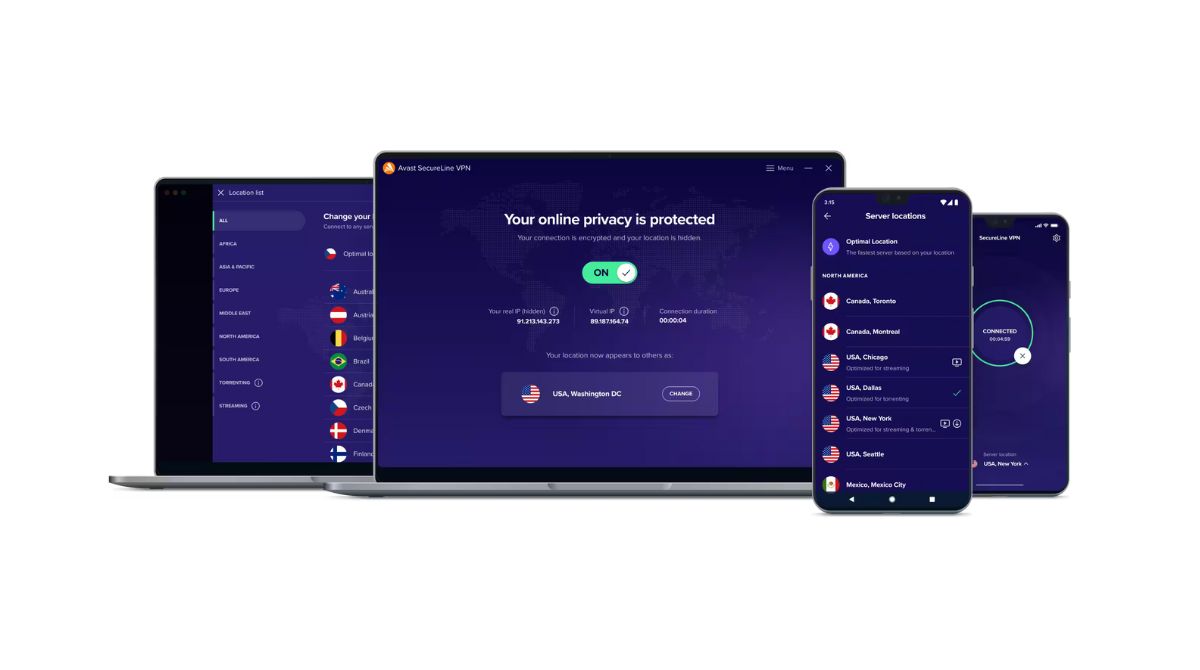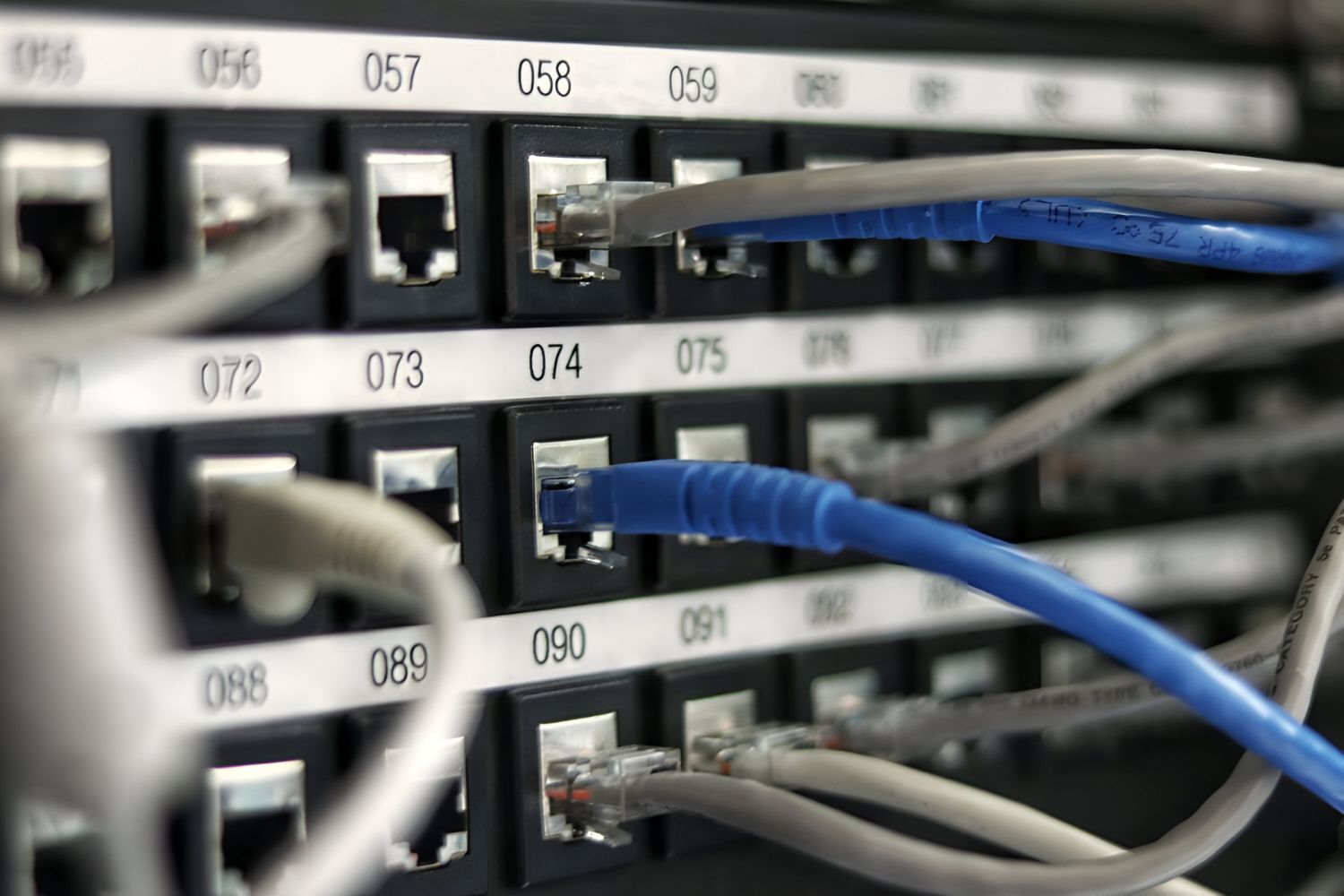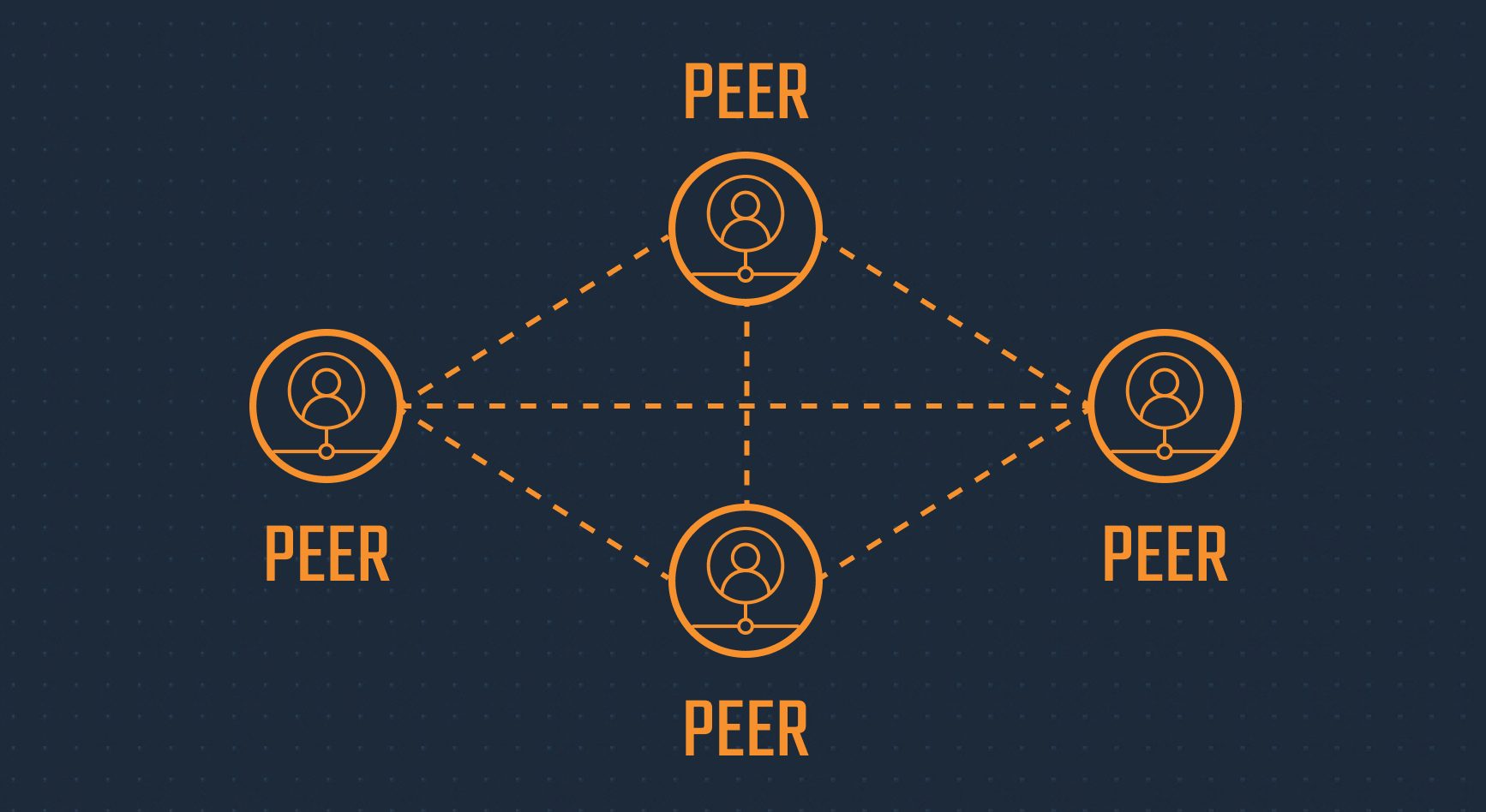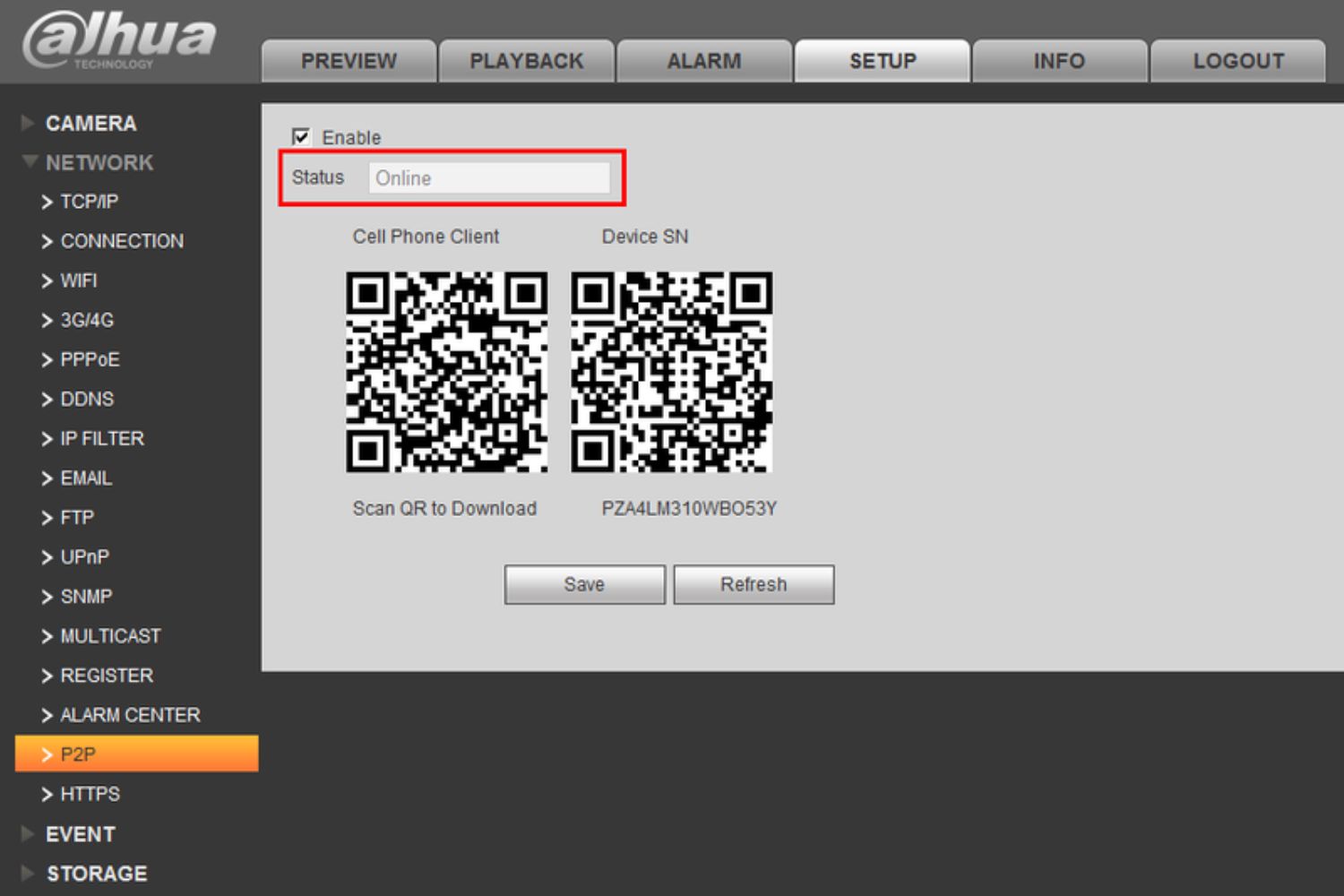Introduction
Welcome to the world of peer-to-peer (P2P) servers, a revolutionary technology that has transformed the way we share and distribute information over the internet. In this digital age, where fast and efficient data transfer is crucial, P2P servers have emerged as a game-changer.
P2P servers are a decentralized form of network architecture that enables users to connect and share resources directly with one another, without the need for a central server. Unlike traditional client-server models, where data is stored and served from a centralized location, P2P servers rely on the collective power and bandwidth of individual users to distribute and retrieve data.
The concept of P2P servers originated from the idea of creating a more resilient and scalable network infrastructure. By distributing the load across multiple users, P2P technology allows for faster data transfer and reduces the risk of a single point of failure. It harnesses the power of the crowd and empowers individuals to collaboratively contribute to the functioning of the network.
With the rise of file-sharing applications, such as BitTorrent, the world witnessed the true potential of P2P servers. These applications not only transformed the way we share files but also paved the way for other innovative applications, such as content delivery networks, distributed databases, and decentralized cryptocurrencies like Bitcoin.
In this article, we will delve deeper into the world of P2P servers, exploring how they work, their advantages and disadvantages, common applications, and examples of P2P server technologies. We will also discuss the future of P2P servers and how they continue to shape the digital landscape.
Definition of P2P Server
A P2P server, also known as a peer-to-peer server, is a decentralized network architecture that relies on the collective computing power and bandwidth of individual nodes to distribute and retrieve data. Unlike traditional client-server models, where a central server serves data to connected clients, P2P servers allow direct communication and data transfer between individual nodes without a central authority.
In a P2P server setup, every node in the network can act as both a client and a server. Each node maintains its own set of resources, such as files or data, that can be shared with other connected nodes. This distributed nature of P2P servers allows for faster and more efficient data transfer as the load is distributed across multiple nodes.
P2P servers operate on the principle of “give and take,” where each participant contributes a portion of their computing power and bandwidth to the network while simultaneously receiving resources from others. This collaborative approach eliminates the need for a central server, reducing the risk of a single point of failure and increasing scalability.
P2P servers utilize various protocols and algorithms to facilitate data exchange among nodes. One of the most popular protocols used in P2P networks is the BitTorrent protocol. BitTorrent employs a “swarm” approach, where users share portions of files with each other simultaneously, allowing for faster downloads and uploads.
It is important to note that P2P servers are not limited to file sharing. They can be used for a wide range of applications, such as content delivery networks, distributed databases, real-time communication systems, and even decentralized finance.
In summary, a P2P server is a decentralized network architecture that enables direct communication and data transfer between individual nodes without relying on a central server. The collaborative nature of P2P servers offers several advantages over traditional client-server models and has given rise to various innovative applications in different industries.
How P2P Servers Work
Understanding how P2P servers work requires a closer look at the underlying mechanisms that enable communication and data transfer among individual nodes in the network.
When a node joins a P2P server network, it establishes connections with other nodes in the network. These connections allow the node to exchange information and resources directly with other participants.
One of the key components of P2P servers is the indexing system. This system keeps track of available resources in the network and enables efficient search and retrieval of data. When a node wants to find a specific resource, it queries the indexing system to identify the nodes that have the desired resource. Once the nodes with the requested resource are identified, the node can initiate direct communication with them to retrieve the data.
Unlike in traditional client-server models, where a central server maintains and serves the data, P2P servers distribute the data across multiple nodes in the network. This distribution allows for faster and more efficient data transfer, as the load is shared among participants.
When a node wants to share a file or resource with others, it breaks the file into smaller pieces and distributes these pieces among connected nodes. This process is known as “seeding.” Each node that receives a piece of the file becomes a “peer” and can subsequently share that piece with other peers. As more nodes join the network, the distributed file becomes more widely available, enhancing the speed and reliability of data transfer.
P2P servers employ various protocols and algorithms to ensure efficient data exchange. These protocols govern how the nodes communicate, how they discover other nodes, and how they distribute and retrieve data. Popular protocols used in P2P servers include BitTorrent, Distributed Hash Table (DHT), and Kad.
It is important to note that while P2P servers offer decentralized and efficient data transfer, they also present unique challenges. One such challenge is the potential for malicious nodes or malicious actions within the network. To address this, P2P servers often incorporate measures such as reputation systems, encryption, and identity verification to maintain security and integrity within the network.
In summary, P2P servers work by establishing direct connections between individual nodes in a network. These nodes communicate, share resources, and distribute data among themselves, eliminating the need for a central server. By utilizing indexing systems and protocols, P2P servers enable efficient and decentralized data exchange.
Advantages of P2P Servers
P2P servers offer several advantages over traditional client-server models, making them a popular choice in various applications. Here are some of the key advantages of using P2P servers:
- Decentralization: The decentralized nature of P2P servers eliminates the need for a central server, reducing the risk of a single point of failure. This decentralization also provides greater resilience and scalability to the network, as individual nodes contribute their resources to distribute and retrieve data.
- Efficient data transfer: P2P servers leverage the collective bandwidth and computing power of the nodes in the network, resulting in faster and more efficient data transfer. With P2P servers, multiple nodes can simultaneously share and retrieve data, improving the overall speed and reliability of the network.
- Reduced bandwidth costs: P2P servers significantly reduce bandwidth costs, both for users and content providers. By distributing the load among participants, P2P servers minimize the need for costly server infrastructure and centralized bandwidth requirements.
- Scalability: P2P servers are highly scalable as they can easily accommodate a growing number of participants in the network. As more nodes join the network, they contribute their resources to handle the increased demand, resulting in efficient data transfer even with a large number of users.
- Resilience: The distributed nature of P2P servers ensures resilience against failures and attacks. If a node goes offline or becomes unavailable, other nodes in the network can still retrieve the data from different sources. This redundancy enhances the fault-tolerance and availability of resources within the network.
- Reduced infrastructure costs: P2P servers eliminate the need for expensive server infrastructure, as the nodes in the network collectively serve as servers. This significantly reduces the infrastructure costs associated with maintaining centralized servers and allows for more cost-effective resource sharing.
- Community collaboration: P2P servers promote community collaboration and resource sharing. Participants in the network contribute their resources and bandwidth, creating a sense of community and fostering a collaborative environment for content distribution and data sharing.
Overall, P2P servers offer numerous advantages, including decentralization, efficient data transfer, reduced costs, scalability, resilience, and community collaboration. These advantages have made P2P servers a preferred choice for various applications, ranging from file sharing to content delivery networks, and have significantly impacted the way we distribute and share information over the internet.
Disadvantages of P2P Servers
While P2P servers offer several advantages, it is important to consider the potential drawbacks associated with this decentralized network architecture. Here are some of the key disadvantages of using P2P servers:
- Security concerns: P2P servers are more susceptible to security threats compared to centralized systems. As participants directly connect and share resources, it becomes challenging to ensure the integrity and trustworthiness of the data being exchanged. Malicious nodes or users can exploit vulnerabilities within the network, leading to privacy breaches, data corruption, or unauthorized access.
- Instability: P2P networks can be prone to instability due to their dynamic and decentralized nature. Nodes may frequently join or leave the network, resulting in fluctuations in available resources and potential interruptions in data transfer. Ensuring network stability and consistency becomes a challenge in P2P server environments.
- Dependency on participant resources: P2P servers heavily rely on the resources contributed by individual participants in the network. If a significant number of nodes leave the network or fail to contribute sufficient resources, it can affect the overall performance and availability of the network. Unequal distribution of resources among participants can lead to disparities in bandwidth, affecting the quality of service for some users.
- Lack of centralized control: In P2P server networks, there is no central authority or server to enforce rules, policies, or content quality standards. This lack of centralized control can lead to challenges in managing and ensuring the authenticity, legality, or reliability of shared resources. It becomes difficult to monitor or regulate the content being shared within the network.
- Limited search capabilities: Unlike centralized servers with robust indexing systems, searching for specific resources in P2P networks can be challenging. The process of discovering nodes that possess the desired data may involve multiple queries and interactions with different nodes. The lack of comprehensive search capabilities in P2P servers can affect the user experience and efficiency of resource discovery.
- Bandwidth consumption: P2P servers rely on the shared bandwidth of participants for data transfer. This can result in high bandwidth consumption, especially in scenarios where popular files are being frequently accessed or shared. Users with limited bandwidth may experience slower internet speeds or increased costs due to the high demands placed on their connection.
Despite these disadvantages, P2P servers remain a popular choice for their decentralized and efficient data transfer capabilities. However, it is important to carefully consider these drawbacks and implement appropriate security measures to mitigate potential risks in P2P server environments.
Common Applications of P2P Servers
P2P servers have found their way into several applications across various industries. Here are some of the common applications where P2P servers are extensively used:
- File Sharing: Perhaps the most well-known application of P2P servers is file sharing. Platforms like BitTorrent and eMule utilize P2P technology to distribute files among connected users. P2P file sharing allows for faster downloads, resilience against server failures, and efficient distribution of popular files.
- Content Delivery Networks (CDNs): Content Delivery Networks make use of P2P servers to distribute content to geographically dispersed users. By leveraging the resources of individual users, CDNs can deliver content faster and reduce strain on central servers. P2P CDNs provide scalability and a cost-effective solution for content distribution.
- Real-Time Communication: P2P servers enable real-time communication applications, such as voice and video calling, online gaming, and streaming services. P2P technology allows direct peer-to-peer communication, reducing latency and dependence on central servers.
- Distributed Databases: P2P servers can be used to create distributed databases with no single point of failure. Instead of relying on a centralized server, data is distributed among participating nodes, ensuring redundancy and fault tolerance. This decentralized approach enhances scalability and availability of data.
- Decentralized Finance (DeFi): P2P servers play a vital role in decentralized finance systems, such as blockchain-based cryptocurrencies and smart contracts. These systems utilize P2P networks to validate transactions, distribute and store data, and ensure the security and integrity of financial operations.
- Collaborative Computing: P2P servers facilitate collaborative computing, allowing users to pool their resources for complex computations. Projects like BOINC (Berkeley Open Infrastructure for Network Computing) utilize P2P networks to harness the computing power of distributed nodes in tasks such as scientific research, data analysis, and simulations.
These are just a few examples of how P2P servers have revolutionized various industries. The decentralized and distributed nature of P2P networks offers numerous possibilities and continues to inspire innovation across different domains.
Examples of P2P Servers
P2P servers have been implemented in various applications, transforming the way we share data and resources. Here are some notable examples of P2P server technologies:
- BitTorrent: BitTorrent is one of the most well-known and widely used P2P server technologies. It revolutionized file-sharing by allowing users to download and share files in a decentralized manner. BitTorrent breaks files into small pieces, which are then distributed among peers for faster and more efficient downloads.
- Popcorn Time: Popcorn Time is a popular P2P-based streaming application that allows users to stream movies and TV shows. P2P technology enables the streaming of content directly from other users’ devices, while the application’s interface makes it easy to search for and play desired media.
- Ethereum: Ethereum is a blockchain platform that utilizes P2P technology to enable decentralized applications (DApps) and smart contracts. It leverages a network of nodes to validate transactions, distribute computational tasks, and maintain the integrity of the blockchain.
- I2P (Invisible Internet Project): I2P is an anonymous overlay network built on P2P technology. It allows users to access websites and services in a secure and private manner by routing internet traffic through a distributed network of participating nodes.
- Storj: Storj is a decentralized cloud storage platform that utilizes P2P servers to distribute and store users’ data. The platform leverages spare hard drive space on participating nodes, allowing users to store and retrieve files securely and cost-effectively without relying on centralized cloud storage providers.
These examples demonstrate the versatility of P2P server technologies, spanning various domains such as file sharing, streaming, blockchain, anonymous networking, and cloud storage. P2P servers continue to pave the way for innovative applications that leverage the power of distributed networks.
Future of P2P Servers
The future of P2P servers is promising, as this technology continues to evolve and inspire new advancements in various fields. Here are some potential developments and trends that indicate the future of P2P servers:
- Decentralized Internet: P2P servers have the potential to reshape the internet by enabling a decentralized infrastructure. As concerns around data privacy and centralization grow, P2P networks offer an alternative approach that empowers individuals to control their data and participate in a more democratic and open internet.
- Blockchain and Distributed Ledger Technology: P2P networks are integral to blockchain technology and distributed ledger systems like Bitcoin and Ethereum. As blockchain adoption increases, P2P servers will play a critical role in facilitating decentralized governance, secure transactions, and transparent record-keeping.
- Edge Computing: P2P servers can facilitate edge computing, bringing computation and storage closer to the source of data generation. By distributing computing tasks and resources among edge devices, P2P networks can enhance the efficiency and performance of edge computing systems, enabling faster data processing and reduced latency.
- Internet of Things (IoT): P2P servers can support the growth of the Internet of Things by enabling direct communication and data exchange among connected devices. P2P networks can alleviate the strain on centralized servers and provide a scalable solution for managing the massive data generated by IoT devices.
- Content Streaming and Media Distribution: As streaming services continue to gain popularity, P2P servers can revolutionize content delivery by reducing reliance on centralized servers. By leveraging the resources of users, P2P networks can enhance the scalability, speed, and cost-effectiveness of media distribution, providing a seamless streaming experience.
- Decentralized Finance (DeFi) and Cryptocurrencies: P2P networks will continue to play a crucial role in the growth of decentralized finance and cryptocurrencies. As DeFi applications expand, P2P servers will enable secure and efficient peer-to-peer transactions, lending, and other financial activities without relying on intermediaries.
These trends indicate that P2P servers will remain a significant part of the evolving digital landscape. As technology advances and more innovative applications emerge, the decentralized nature and efficiency of P2P networks will continue to be harnessed, offering new possibilities and transforming the way we interact, share, and distribute data.
Conclusion
P2P servers have revolutionized the way we share, distribute, and access data over the internet. By harnessing the collective power of individual nodes in a decentralized network, P2P servers offer numerous advantages, including efficient data transfer, scalability, resilience, and reduced infrastructure costs.
From file sharing and content delivery networks to real-time communication and decentralized finance, P2P servers have found applications in various industries, shaping the digital landscape and enabling innovative solutions.
While P2P servers offer many benefits, they also come with their share of challenges. Security concerns, network instability, and dependency on participant resources are among the key disadvantages. However, advancements in encryption, reputation systems, and identity verification can help address these concerns and ensure secure and reliable P2P server environments.
The future of P2P servers is promising. With the rise of decentralized technologies like blockchain and the increasing demand for privacy, P2P networks are set to play a significant role in shaping the internet of tomorrow. Decentralized internet, edge computing, IoT, content streaming, and the continued growth of DeFi and cryptocurrencies are some areas where P2P servers are expected to have a significant impact.
In conclusion, P2P servers have transformed the way we distribute, share, and access information. With their decentralized and efficient data transfer capabilities, P2P servers offer a flexible, scalable, and cost-effective solution for various applications. As technology advances, we can expect more innovations and advancements in the realm of P2P servers, further revolutionizing the way we connect and collaborate in the digital world.

























